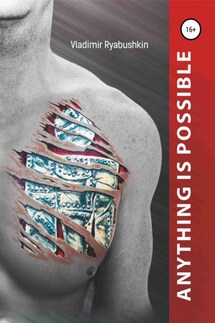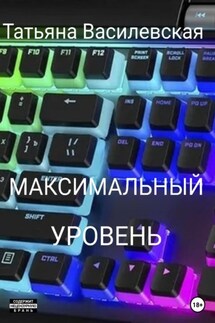Anything is possible - страница 2
You will find a lot of information on how to deal with your heart rate and aerobic and anaerobic thresholds in specialized literature. The above is a very simplified method, but it is workable enough, especially if you are at the beginning of your sporting journey.
Be sure to determine your heart rate, otherwise you will train blindly and stupidly.
NECESSARY EQUIPMENT
In order to make your training effective and to succeed in competitions in the future, it is very important to choose the right equipment. Here is a list of necessary items and specific models formed on the basis of my experience:
1) sports watch;
2) velocity sensor;
3) heart rate sensor;
4) cadence sensor (cadence is the rate of the bike’s pedals turning).
SPORTS WATCH. Garmin 910 and later models are, in my opinion, the best in quality-price-capability, proven by time and practice of races. The following data fields on the screen of Garmin 910 are set up for the running stage (Fig. 1):
time (timer); pace; distance; heart rate.
For the cycling stage, the following fields are set up (Fig. 2):
a) on the first page: speed; cadence;
heart rate; slope.
b)
average speed; time (timer); distance.
Fig. 1. Setting up Garmin 910 data fields for the running stage
Fig. 2A, 2B. Setting up data fields on the first and second pages of the cycling stage
Fig. 3. Setting up data fields of Garmin 810 fields for the cycling
cadence; speed; heart rate; time (timer); distance; slope.
SPEED SENSOR.
Technically, Garmin watches have a built-in GPS sensor that will determine your speed, but its readings depend on the quality of satellite signal reception. With a speed sensor, you will be not dependent on the satellites, and your speed data will be more accurate. But you can easily go without it.
HEART RATE SENSOR shows the number of beats of your heart per minute (Fig. 4).
By using this parameter, you can monitor your overall physical condition during training and at competitions, the impact of physical exercise on your body, plan your training loads, analyze the results achieved and determine your progress in sports development. All this is quite possible for an amateur athlete.
It is easy to keep your heart rate in check, just buy a heart rate monitor and connect it to Garmin.
Monitoring your heart rate is the best way to keep an eye on your condition concerning the price-performance ratio. A power sensor can also be used for planning and monitoring your training. This is a very useful but very expensive thing. Relatively cheap models, unfortunately, are not yet reliable enough.
At the initial stage, it will be enough to focus on heart rate monitoring. You need to know and remember: is it possible to overcome the Ironman distance, as well as the Half ironman and the Olympic distance, only in aerobic mode. This is especially true for beginners.
CADENCE SENSOR shows the number of pedal revolutions per minute (Figure 5).
This is a very important part of your training. With a heart rate monitor you keep in check your whole body; it helps to protect the heart. Cadence sensor makes it possible to monitor your undercarriage (which is your legs) and optimize the load on them. For the running stage, there is also a special speed and distance sensor, with which you can monitor the cadence, here meaning the number of steps per minute. It is mounted on one of your running shoes and serves as an alternative to the GPS sensor. It is convenient to use it during training indoors, in gyms, on treadmills where it is impossible to catch satellite signal.






